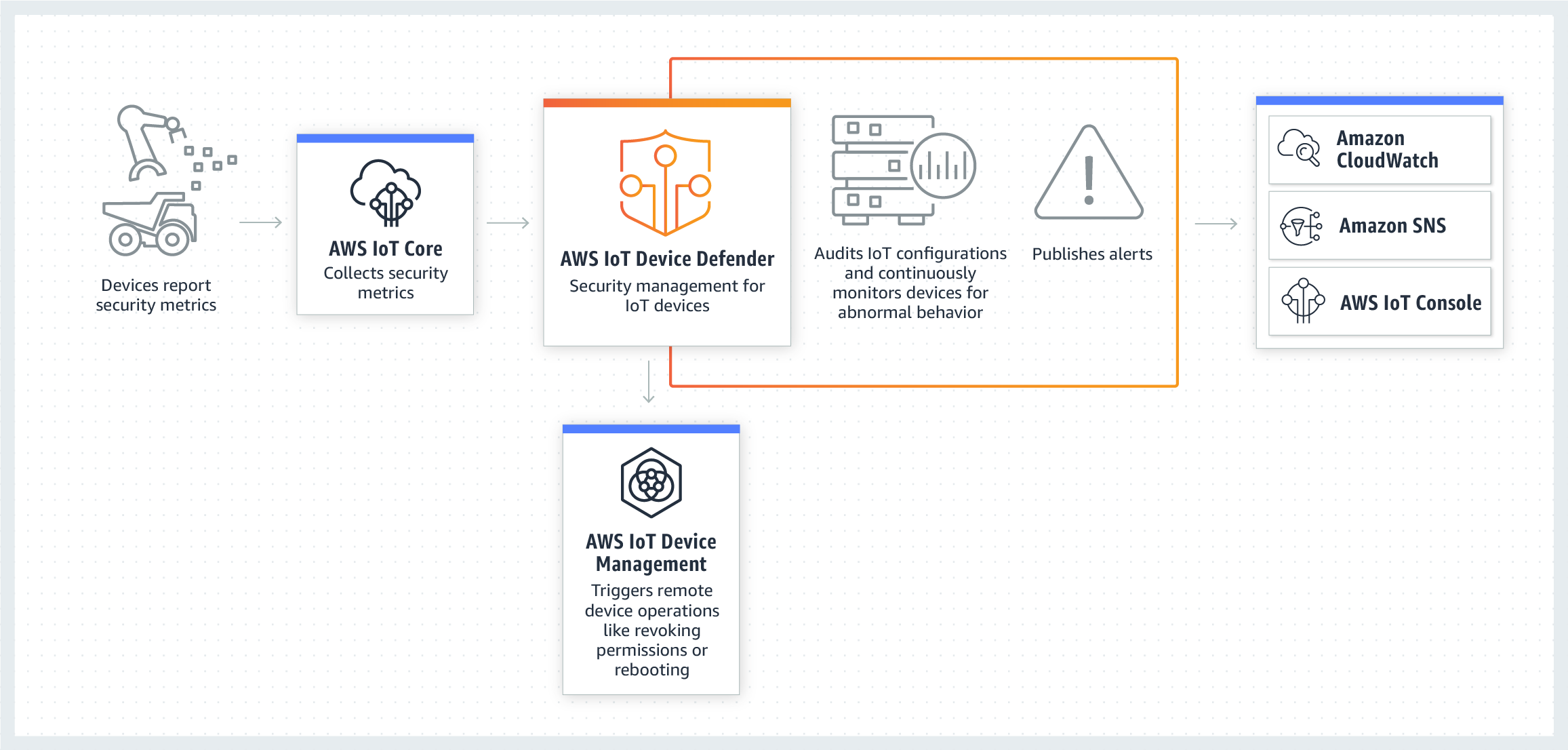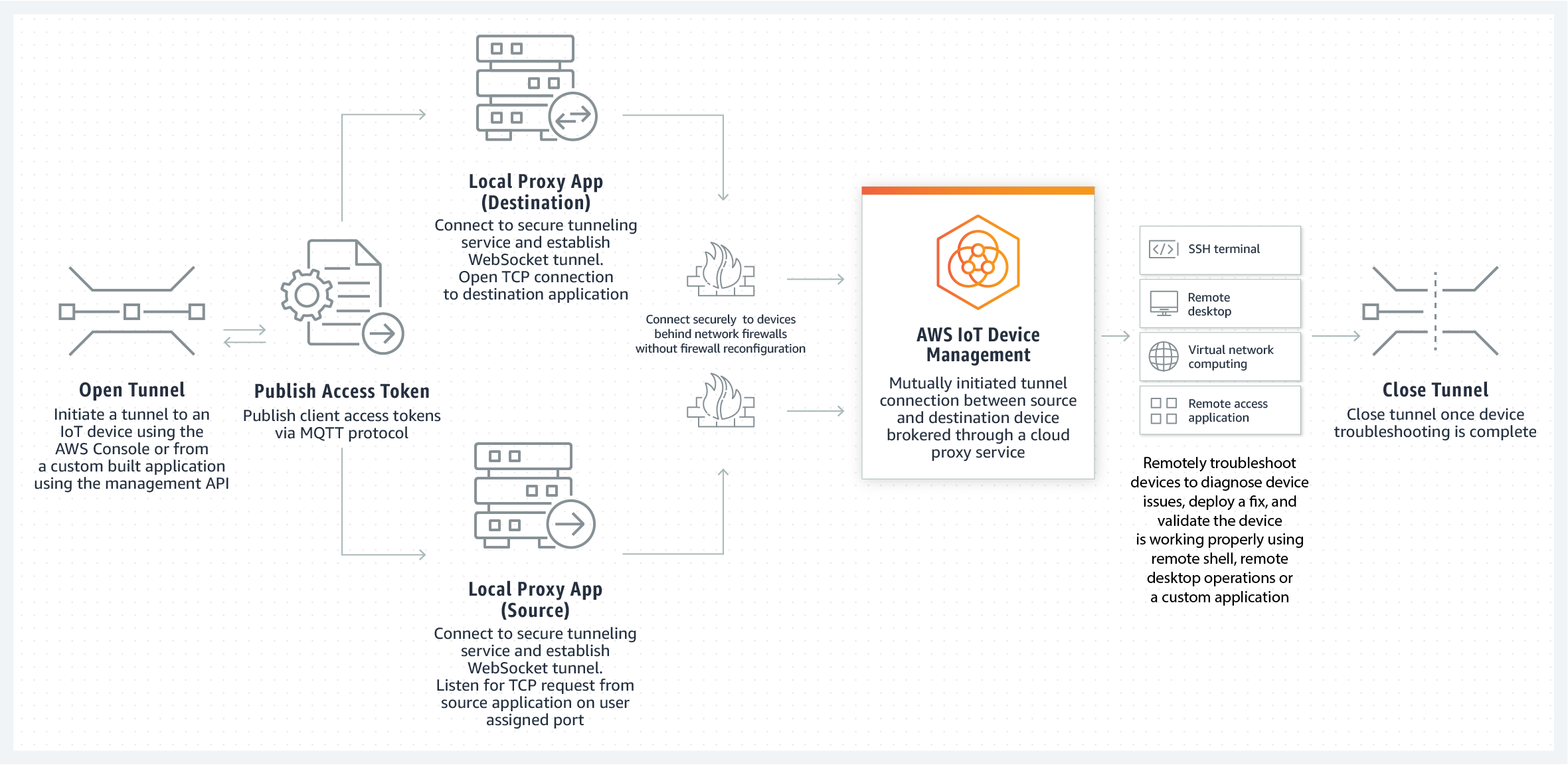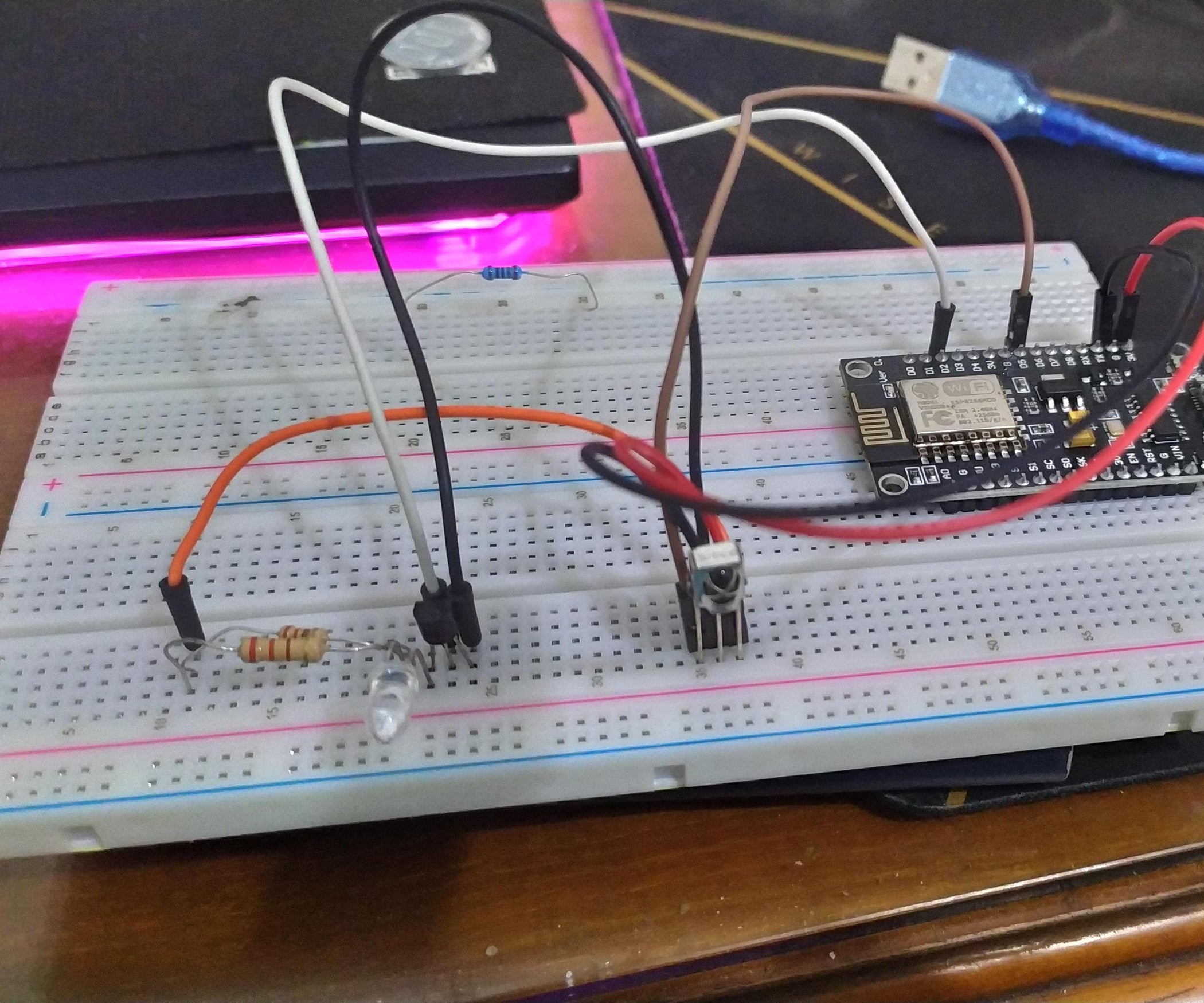Let’s face it, folks, the world of IoT SSH AWS is no longer just a buzzword. It’s the future of how we connect, manage, and secure devices in the cloud. If you’re diving into this realm, you’ve landed on the right page. Whether you’re a tech enthusiast, developer, or just someone curious about how IoT works with AWS SSH, this article’s got your back. So, buckle up because we’re about to unravel the magic behind IoT SSH AWS.
Now, before we dive deep into the nitty-gritty, let’s set the stage. IoT SSH AWS isn’t just another tech stack; it’s a powerful combination that allows you to remotely access and manage IoT devices using AWS services. Think of it as giving your gadgets superpowers in the cloud. But why does it matter? Because in today’s hyper-connected world, security and efficiency are non-negotiable. And that’s exactly where IoT SSH AWS shines.
So, whether you’re trying to secure your smart home setup or manage an entire fleet of industrial sensors, this guide will walk you through everything you need to know. From the basics to advanced strategies, we’ve got all the angles covered. And hey, don’t worry if you’re new to this—by the end of this article, you’ll feel like a pro. Let’s get started, shall we?
- Deephotcom Your Ultimate Guide To Unlocking Hidden Gems In The Digital World
- Desi Mms Leak The Truth Impact And What You Need To Know
But first, here’s a quick roadmap to help you navigate:
- What is IoT SSH AWS?
- Why Should You Care About IoT SSH AWS?
- Getting Started with IoT SSH AWS
- Security Best Practices for IoT SSH AWS
- AWS IoT Core: The Backbone of Your IoT SSH Setup
- SSH in IoT: How It Works
- Real-World Applications of IoT SSH AWS
- Troubleshooting Common Issues
- Future Trends in IoT SSH AWS
- Wrapping It Up
What is IoT SSH AWS?
Alright, let’s break it down. IoT SSH AWS is essentially a framework that combines Internet of Things (IoT), Secure Shell (SSH), and Amazon Web Services (AWS). Here’s the deal: IoT refers to all those smart devices around you—your smart fridge, thermostats, or even industrial sensors. SSH is like the secure pathway that lets you remotely access and manage these devices. And AWS? Well, it’s the cloud powerhouse that brings everything together.
In simpler terms, IoT SSH AWS allows you to securely connect, manage, and monitor IoT devices from anywhere in the world using AWS services. It’s like having a remote control for your entire network of smart gadgets, but with enterprise-grade security. And trust me, in today’s world where data breaches are a real concern, this setup is a game-changer.
- Bollyflix Movies Bollywood Your Ultimate Guide To Streaming Bollywood Hits
- Somali Nude Exploring Cultural Narratives And Misunderstandings
Why Combine IoT, SSH, and AWS?
There’s a reason why these three technologies are a match made in tech heaven. IoT gives you the ability to connect devices, SSH ensures secure communication, and AWS provides the scalability and reliability needed to handle everything. It’s like a tech trifecta that makes managing IoT devices not only possible but also efficient and secure.
Why Should You Care About IoT SSH AWS?
Okay, here’s the thing. If you’re involved in anything related to IoT—whether it’s building smart homes, managing industrial IoT setups, or even just tinkering with personal projects—IoT SSH AWS should be on your radar. Why? Because it solves some of the biggest challenges in IoT today:
- Security: With SSH, you can ensure that your device communications are encrypted and secure, protecting sensitive data from prying eyes.
- Scalability: AWS provides the infrastructure needed to scale your IoT setup as your needs grow, whether you’re managing a few devices or thousands.
- Reliability: AWS’s robust cloud services ensure that your IoT devices stay connected and operational, even during peak usage.
- Cost-Effectiveness: By leveraging AWS’s pay-as-you-go model, you can optimize costs without compromising performance.
And let’s not forget the convenience factor. With IoT SSH AWS, you can manage your devices from anywhere, anytime, without needing to be physically present. Now, who wouldn’t want that?
Getting Started with IoT SSH AWS
So, you’re ready to jump into the world of IoT SSH AWS. Great! Here’s a step-by-step guide to help you get started:
Step 1: Set Up Your AWS Account
First things first, you’ll need an AWS account. If you don’t already have one, head over to the AWS website and sign up. AWS offers a free tier, so you can experiment without breaking the bank.
Step 2: Create an IoT Core Thing
AWS IoT Core is where the magic happens. Think of it as the control center for all your IoT devices. To get started, create a "Thing" in IoT Core, which represents your IoT device. You’ll also need to set up certificates and policies to secure your device.
Step 3: Configure SSH Access
Next, you’ll need to configure SSH access for your devices. This involves setting up SSH keys and ensuring that your devices are properly configured to accept SSH connections. AWS provides detailed documentation to guide you through this process.
Step 4: Test Your Setup
Once everything’s set up, it’s time to test your IoT SSH AWS setup. Connect to your device using an SSH client and make sure everything’s working as expected. If you run into any issues, AWS’s support resources are there to help.
Security Best Practices for IoT SSH AWS
Security is a top priority when it comes to IoT SSH AWS. Here are some best practices to keep your setup safe:
- Use Strong Passwords: Make sure your SSH passwords are strong and unique. Avoid using default credentials.
- Enable Two-Factor Authentication: Add an extra layer of security by enabling two-factor authentication for SSH access.
- Regularly Update Firmware: Keep your IoT devices’ firmware up to date to patch any security vulnerabilities.
- Monitor Activity Logs: Use AWS CloudTrail to monitor activity logs and detect any suspicious behavior.
By following these best practices, you can significantly reduce the risk of security breaches and ensure that your IoT SSH AWS setup remains secure.
AWS IoT Core: The Backbone of Your IoT SSH Setup
AWS IoT Core is the heart of your IoT SSH AWS setup. It’s the service that connects, manages, and monitors your IoT devices. Here’s why it’s so important:
First off, AWS IoT Core provides secure and reliable communication between your devices and the cloud. It supports multiple protocols, including MQTT, HTTP, and WebSocket, giving you flexibility in how you connect your devices. Plus, with features like device shadows and rules engine, you can easily manage and automate your IoT setup.
But that’s not all. AWS IoT Core also integrates seamlessly with other AWS services, such as Lambda, S3, and DynamoDB, allowing you to build powerful IoT applications without worrying about the underlying infrastructure. It’s like having a Swiss Army knife for IoT development.
SSH in IoT: How It Works
SSH, or Secure Shell, is the protocol that allows you to securely connect to and manage your IoT devices. Here’s how it works:
When you initiate an SSH connection, your device establishes a secure, encrypted channel with the server. This ensures that all data transmitted between your device and the server is protected from unauthorized access. SSH also supports public-key authentication, which adds an extra layer of security by requiring a private key to access the device.
For IoT SSH AWS, AWS provides tools and services to simplify the SSH setup process. You can use AWS Systems Manager to manage SSH access for your devices, making it easier to secure and monitor your IoT setup.
Real-World Applications of IoT SSH AWS
IoT SSH AWS isn’t just theoretical; it’s being used in real-world applications across various industries. Here are a few examples:
Smart Homes
In smart homes, IoT SSH AWS allows homeowners to remotely access and manage their smart devices, such as thermostats, security cameras, and lighting systems. This not only enhances convenience but also improves energy efficiency and security.
Industrial IoT
In industrial settings, IoT SSH AWS is used to monitor and manage large-scale IoT deployments, such as factory equipment and supply chain logistics. By leveraging AWS’s scalability and reliability, companies can optimize their operations and reduce downtime.
Healthcare
In healthcare, IoT SSH AWS is used to securely connect and manage medical devices, such as remote patient monitoring systems. This enables healthcare providers to deliver better care while ensuring patient data remains secure.
Troubleshooting Common Issues
Even with the best setup, things can go wrong. Here are some common issues you might encounter with IoT SSH AWS and how to fix them:
- Connection Issues: Check your device’s network settings and ensure that it’s properly connected to the internet.
- Authentication Failures: Verify that your SSH keys and certificates are correctly configured.
- Performance Bottlenecks: Optimize your AWS setup by using appropriate instance types and scaling policies.
And remember, AWS’s support resources are there to help you troubleshoot any issues you might encounter. Don’t hesitate to reach out if you need assistance.
Future Trends in IoT SSH AWS
So, what’s next for IoT SSH AWS? Here are a few trends to watch out for:
- Edge Computing: As IoT devices become more powerful, edge computing will play a bigger role in IoT SSH AWS setups, allowing for faster and more efficient data processing.
- AI and Machine Learning: Integrating AI and machine learning into IoT SSH AWS setups will enable smarter decision-making and automation.
- Quantum Computing: While still in its early stages, quantum computing has the potential to revolutionize IoT security and processing capabilities.
As these trends evolve, IoT SSH AWS will continue to grow and adapt, providing even more powerful tools for managing and securing IoT devices.
Wrapping It Up
There you have it, folks—a comprehensive guide to mastering IoT SSH AWS. From understanding the basics to exploring real-world applications and future trends, we’ve covered it all. IoT SSH AWS isn’t just a tech stack; it’s a powerful tool that can transform how you connect, manage, and secure your IoT devices.
So, what’s next? If you found this article helpful, don’t forget to share it with your friends and colleagues. And if you have any questions or feedback, feel free to leave a comment below. Together, let’s keep pushing the boundaries of what’s possible with IoT SSH AWS.
Until next time, stay curious and keep innovating!
- Wasmo Somali Telegram Link 2024 Your Ultimate Guide To Joining The Community
- Sone436 Unlocking The Secrets Behind The Phenomenon


